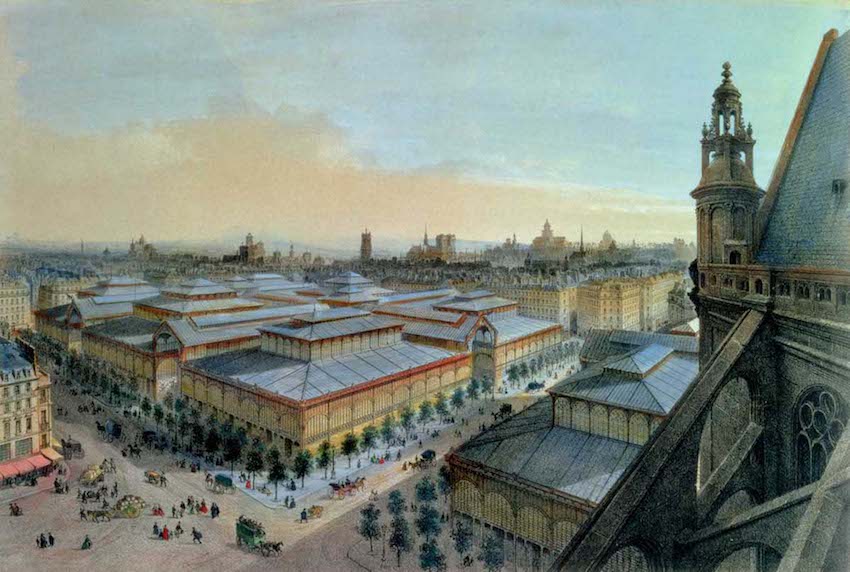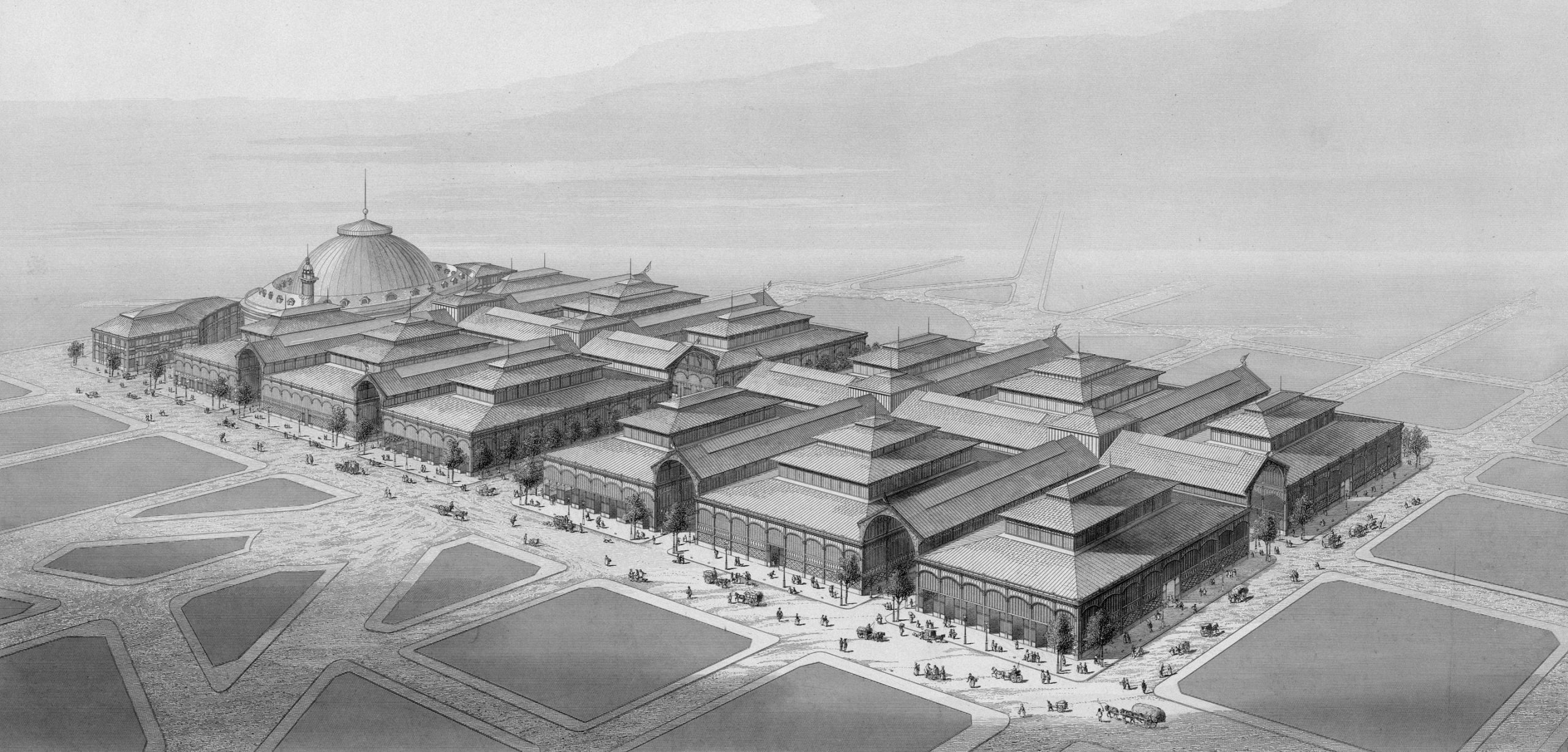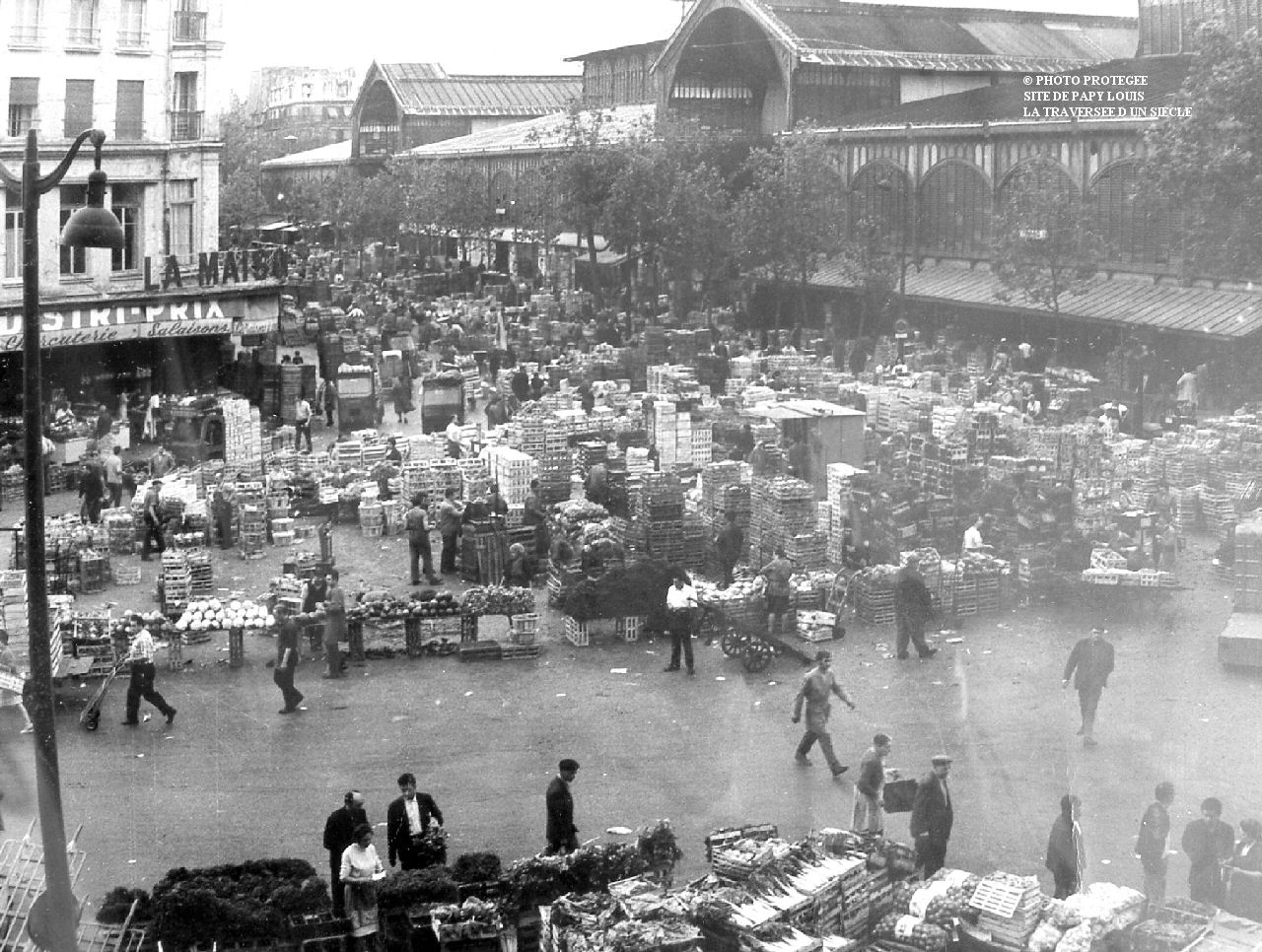
Les Halles à travers le temps Le ventre de paris, Châtelet les halles, Vieux paris
La construction des halles centrales est associée à l'un des plus grands architectes français du XIX e siècle, formé aux Beaux-Arts : Victor Baltard (1805-1874). Soutenu par l'administration parisienne, en particulier par Haussmann, l'un de ses proches amis, il développe de nombreux projets pour les halles.

A Paris Guide Les Halles
The boldness of the Halles's design and its centrality to the reconstruction of Paris should have guaranteed Baltard a prominent place in the history of modernism, a place that might even have surpassed the one now occupied by his slightly older contemporary Henri Labrouste (1801-1875).

Les Halles Centrales, nouvelles Halles de Baltard, 1er arrondissement, Paris. Paris Musées
English: Les Halles, Paris, by Victor Baltard, 1852-1855 Date Unknown date Unknown date https://www2.oberlin.edu/images/Art270/Art270.html Unknown author Unknown author Licensing[edit] This is a faithful photographic reproduction of a two-dimensional, public domain work of art.

La petite histoire des Halles de Baltard Paris ZigZag Insolite & Secret
Les Halles, one of the splendid Second Empire projects, was designed by Victor Baltard and employed the most advanced construction technology of the time, iron and glass. "The belly of Paris, " as the market was called by Emile Zola, was one of the symbols of the city's modernity.

Monuments et architecture Les Halles de style Baltard Jonzac
Les Halles ( French pronunciation: [le al]; 'The Halls') was Paris ' central fresh food market. It last operated on 12 January 1973 [1] and was replaced by an underground shopping centre and a park.

1852 Les Halles de Baltard Paris Unplugged
In 1971, the Baltard Pavilions met the wrecking ball, and in their place Forum Les Halles emerged. Or rather, was submerged, as the new structure became one of the largest underground shopping malls in Europe. When completed in 1979, Forum Les Halles and the adjoining Chatelet-Les Halles train station became known as the hole in the middle of.

leshallesdebaltardparis Dondon Media 1 Bons Plans et Actus du Japon 🇯🇵
In Western architecture: Construction in iron and glass.umbrellas, such as Victor Baltard's Halles Centrales, Paris (1853-70; demolished 1971). An especially beautiful example of iron-and-glass construction is Henri Labrouste's nine-domed reading room at the Bibliothèque Nationale, Paris (1860-67).

Les Halles de Baltard, Paris Ier arr.
Les Halles de Paris était le nom donné aux halles centrales, marché de vente en gros de produits alimentaires frais, situé au cœur de Paris, dans le 1er arrondissement, et qui donna son nom au quartier environnant. Au plus fort de son activité et par manque de place, les étals des marchands s'installaient même dans les rues adjacentes.

Les Halles Baltard Passerelles
Les Halles, which means what it sounds like, was one of the true wonders of working class Paris. Made famous by Emile Zola's famous novel of the same name, it was nicknamed " the stomach " of Paris for obvious reasons, as well as the scale of it's labyrinthine underground alleys selling fish, meat and vegetables.

Les Halles de Baltard Paris Musées
Baltard's Halles were under threat the minute the central market emigrated to the suburb of Rungis. And the threat materialized in 1968 when the city of Paris announced that it would build a.

Le Paris d'autrefois vu par Patrick PARIS 1er ARRONDISSEMENT Des Halles à la rue
Callet, Félix (1792-1854). Les Halles centrales de Paris, construites sous le règne de Napoléon III, par V. Baltard et F. Callet,…. 1862 Vigneau, Jules. Les Halles centrales de Paris autrefois et aujourd'hui. Historique, organisation et fonctionnement, facteurs et mandataires, par M. Jules Vigneau,…. 1903 Aucun champ trouvé.

Les halles de Baltard avant démolition
The area. 101 Porte Berger, 75001 Paris France. Neighborhood: Les Halles. Historically the central iron-clad market of Paris, Les Halles has evolved architecturally since then but the pulsating energy has stayed the same. Now it houses the main shopping mall, which nestles underground surrounded by fast-food take-aways and international.

Halles Baltard Paris Art Nouveau — The Join Us in France Travel Cast Iron Architecture
Les Halles de Baltard were highly controversial at the time of their construction, but eventually became one of the iconic buildings of Paris. Sadly, they eventually become obsolete. They were pulled down in the 1970s and the market transferred to Rungis in the southern outskirts of Paris.

paradis express Les Halles, Paris
The resulting wrought-iron and glass pavilions of Les Halles, designed by the city architect Victor Baltard, were tragically bulldozed in the 1970s and replaced with a grim underground shopping.

Les Halles de Baltard, Paris Ier arr.
Writer Emile Zola called Les Halles "the belly of Paris"; the reason is that Les Halles de Baltard literally fed Paris and the Parisians for centuries (hence the nickname "belly of Paris"). In 1969, Les Halles de Baltard were closed and the buildings destroyed.

9Les Halles de Baltard et le Paris perdu in 2020 Art, City art, Concept art
Baltard Pavilion. In the town of Nogent-sur-Marne stand the last remains of the Grandes Halles de Paris, Paris's great covered market known as Les Halles and built during the Second Empire. Only as a result of the town's obstinacy was this pavilion the only one to escape demolition in 1970. The Baltard Pavilion (Pavilion number 8) for egg and.